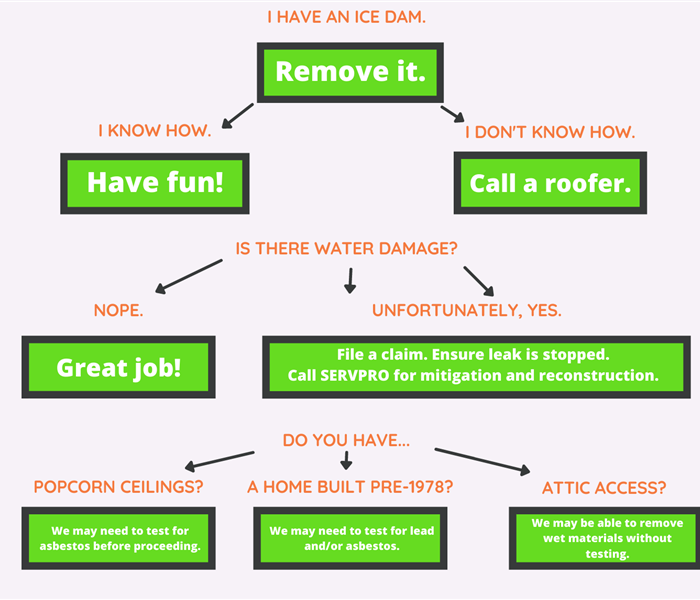Ice Dams: a Quick Primer
2/23/2021 (Permalink)
What is an ice dam? It's pretty straightforward: ice buildup on the eaves of a sloped roof that prevents snowmelt from draining properly.
Why are they bad? Ice dams:
- Can tear off gutters and loosen shingles.
- Can cause water to back up into structure.
- Can make insulation wet, making it a prime target for mold and mildew.
Bad news, right? If you have an ice dam, here's what we suggest.
What should I do if...
...I have an ice dam? If possible, remove it before snow starts to melt. If you don't have the tools (e.g. a roof rake) or the experience, call in a roofer - they'll be able to sort it out.
...water has already backed up into the house? Call your insurance office to get a claim started, then call a roofer to fix the damage. The leak must be stopped before the drying process starts in order for it to be effective. Then call in a mitigation company like SERVPRO to begin the drying process.
...there's already serious damage to my home or possessions? Same as above, but also talk to SERVPRO about reconstruction and contents cleaning. More than that, be careful - don't put yourself at risk with a sagging or compromised ceiling.
When you call SERVPRO of The Southtowns about your ice dam, we might ask the following.
Have you filed a claim? It's best if homeowners get their insurance involved ASAP.
What type of ceilings do you have? All popcorn ceilings require testing before we can open them up, though we can pick up fallen debris without testing.
When was your home built? Pre-1974, we're legally required to test for asbestos and lead. Pre-1978, just lead.
Can we access the attic? If we can, we can often remove wet insulation without needing to open up ceilings. Especially helpful if we'd otherwise need to get lead/asbestos testing.
Need help fast? Call 716-646-6684. We're available 24/7/365.






 24/7 Emergency Service
24/7 Emergency Service